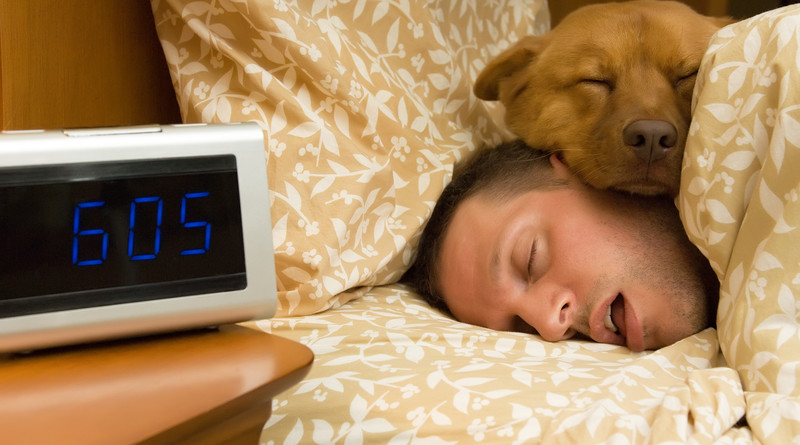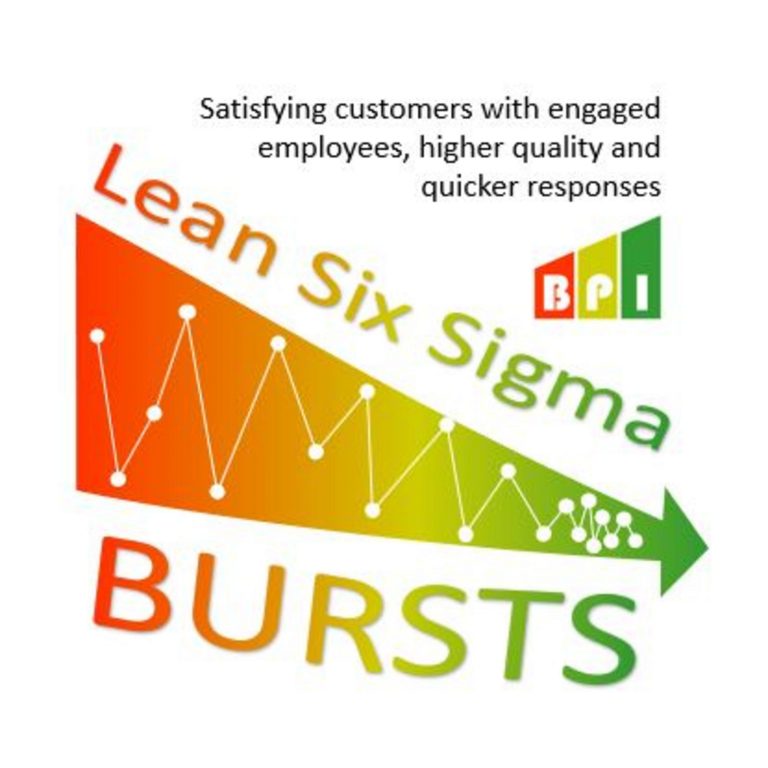Use capability analysis to see if you are sleeping enough
My wife says I don’t sleep enough, and she is right. I tried to argue with her for years, saying that I don’t feel tired, and I have too much going on, but deep down I knew she was right.
Like any good Lean Six Sigma practitioner, I needed to get some data, to see if there truly is a problem or not.
I bought a FitBit Flex, so I could capture actual data on how much I sleep. You don’t need the fancy model, the Flex version works just fine.
Unless you pay to upgrade, it’s not the easiest thing to download and access the data, so I manually typed in the results into Minitab from January thru March 2016. When using time-based data, you’ll need to make sure the hours and minutes are in decimal form (Ex: If you sleep 8 hours and 15 minutes, then it needs to be recorded as 8.25).
Here are the results:

As you can see, I sleep between 5 and 11 hours each night (4.8 to 10.667 to be exact), and average (mean) around 6.7 hours per night, with a median time of 6.3 hours. That sounds about right. I know the fitbit isn’t 100% accurate, but it seems really close (within a few minutes), and I only have one device, so I don’t feel I need to perform a Gage Repeatability and Reproducibility (R&R) study.
You’ll also notice that the data is nonnormal (Anderson-Darling Normality test has p-value less than 0.05), which is not surprising to me. Most time-based data is not normally distributed (Gaussian distribution).
I also looked at the stability of the data using a run chart (or Time Series Plot in Minitab), and it looks stable over time. Remember that the data is nonnormal, so some higher readings might look like outliers, but they are probably not. This chart tells me that my process is consistent over this time period, and I don’t need to segment the data (I can use all the data in my analysis).

In order to assess whether I was capable of getting enough sleep or not, I need to determine how many hours of sleep was considered “enough.”
I knew I wasn’t close to 8 hours, and I really don’t think I need to average 8 hours, so I started with 7 hours. Therefore, 7 hours will be the lower specification limit (LSL). I don’t think I can get too much sleep, so I don’t need to set an upper specification limit (USL). Capability analysis requires at least one limit, but does not require two limits, which is a common misunderstanding.
To determine my capability of achieving at least 7 hours per night, I ran a nonnormal capability analysis using a lognormal distribution, which is an easy thing to do within Minitab.
The results show that I am not getting enough sleep. Let me explain why.
The Expected Overall Performance shows that there is a 68.86% chance of being below the LSL (% < LSL), given the variation in my sleep process (depicted by the red line overlaying the bars). That means 68% of the time, I’m sleeping less than 7 hours. On the left side, you can see the Observed Performance of 61.9%, which is the actual percentage of time that I slept less than 7 hours. Those two numbers should be similar, if you fit the distribution correctly, and there aren’t many outliers. This is also reflected in the Ppk value of -0.16. Ideally you want Ppk to be at least 1.0 (1.33 or greater is the textbook answer), and I am actually below zero. That means the mean (average) hours of sleep per night is below the LSL, which is why our percentage is over 50%.
Yikes, I thought it would have been the opposite, 68% of the time I was getting at least 7 hours. OK, now I agree I have a problem.
To improve my capability, I will need to shift the mean amount of hours by first understanding the variation. Let’s look at an ANOVA to see if the day of the week explains some of the variation.

Since the p-value for “Day of Week” is less than 0.05, we can conclude that the mean sleep hours are statistically different for at least one day of the week. Let’s see which ones are different.
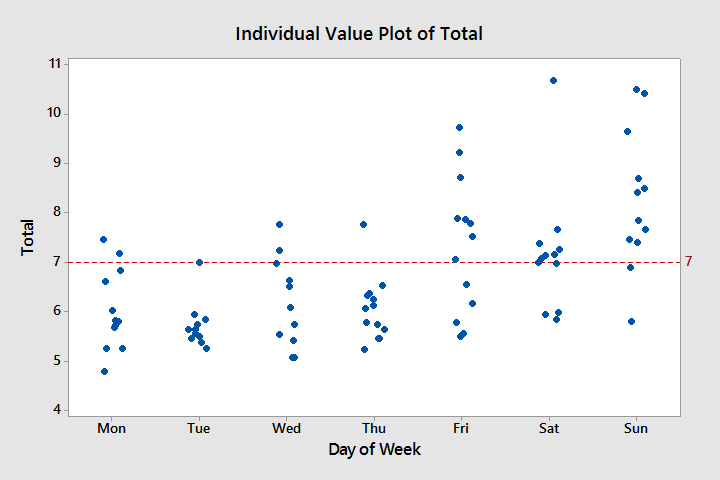
As you can see, the results from Monday through Thursday are very similar, which makes sense. Friday is a little strange, but since I work every other Friday, and my Friday work schedules are less busy, that could explain it. That might be something to categorize later, whether it was a working or non-working Friday. Saturday and Sunday show more sleep, which also makes sense.
I also ran pairwise comparisons, to see which days of the week were similar to each other. I used Tukey’s test, since Minitab says that “Tukey’s method is generally more powerful than the Bonferroni and Sidak methods”
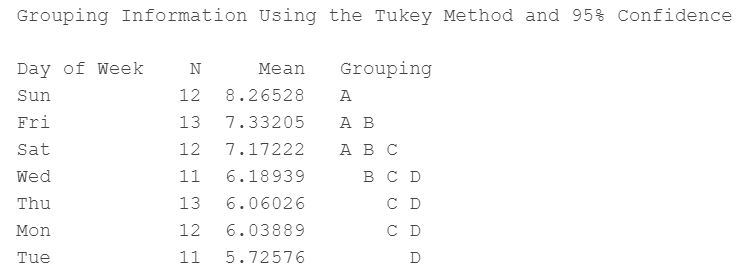
If the days of the week have the same letter, then they are not statistically different (similar to each other). If they do not have the same letter, they are statistically different.
These results show that Sunday is similar to Friday and Saturday (group A), and Friday, Saturday and Wednesday are similar (group B), and Wednesday, Thursday, Monday and Tuesday are statistically different than Sunday, Friday and Saturday (group D vs group A).
To simplify the data, I categorized the results into two groups: Weekday (group D) and Weekend (group A).
I re-ran the capability analysis, breaking it out by the two groups.

The Ppk results get better on the weekend (Ppk = 0.12). I can summarize the results by group, to see exactly how I’m doing on weekdays and weekends.
In the Minitab output of this chart, it shows that I have a 36.1% of being below the LSL (7 hours) on weekends, and a 91.5% chance of being below the LSL on weekdays.
Here is the same Individual Value Plot, broken up into both groups.
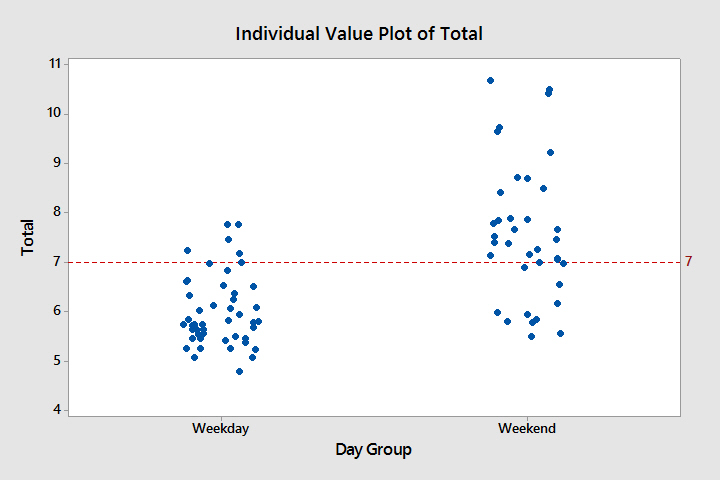
That’s a large difference, but not surprising.
I would be pretty happy if I can achieve 90% success of sleeping at least 7 hours, so that will be my new goal. With the current variation in my sleeping process, I’ll have to add an average of 1.5 hours each night in order to achieve this.
To make this large of an improvement, I’ll need to focus on my weekday sleeping process. My initial thoughts are around going to bed earlier (difficult to do with my current schedule), add some naps during the day (also difficult to do), or waking up later (more likely).
I’ve been thinking about this for a few months (August 2016), but I haven’t been able to make much progress. If I make some improvement, I’ll post some updates here.
What are some techniques you’ve done to increase the number of hours slept each night?
Would you like to learn more about capability analysis and Gage R&R studies? Click the link to check out our Powerpoint training slides with speaker notes…
Would you like to do a similar analysis? Contact me and I’ll help you out!

